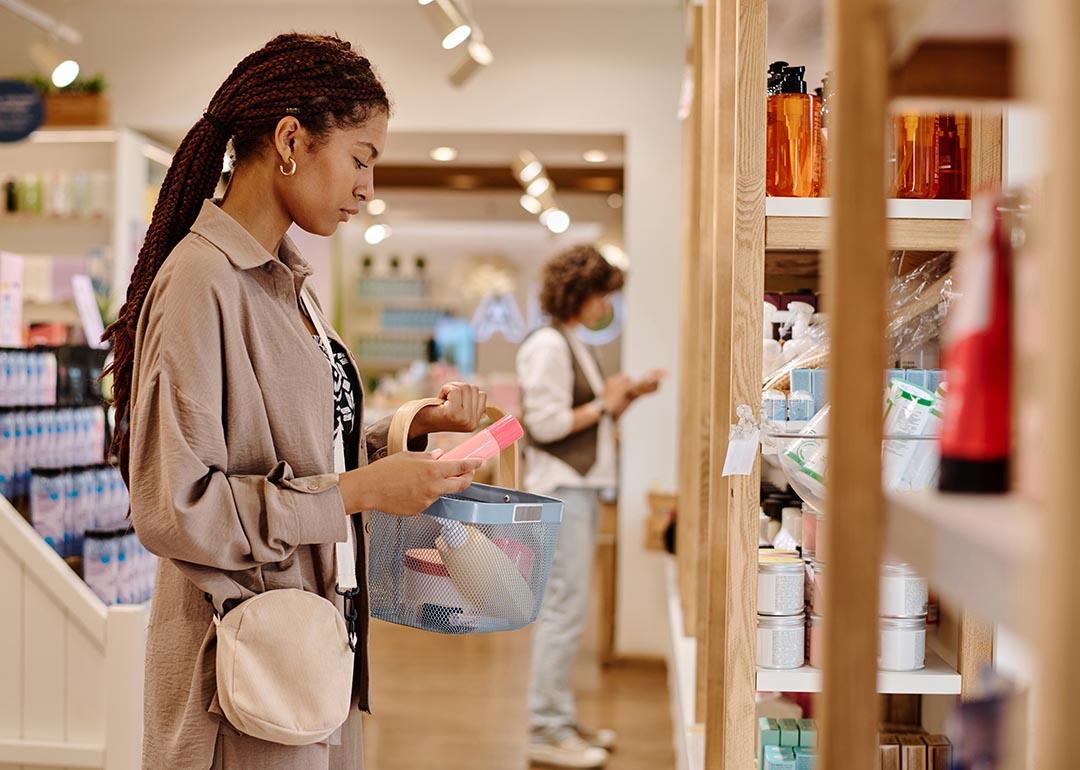
This story originally appeared on parfumdreams, was produced in collaboration with DataPulse, and was reviewed and distributed by Stacker Media.
Should we stop talking about the 'lipstick effect'?
Lipstick sales are strong when the economy is weak. That's the idea behind the "lipstick effect" — a theory that melds consumer psychology with economic conditions.
The logic certainly makes sense: During economic downturns, when consumers can't afford big splurges yet want to boost their confidence and morale, they turn to smaller, more affordable luxuries like lipstick. Leonard Lauder, chairman emeritus of Estée Lauder, told the Wall Street Journal in 2001 that "when lipstick sales go up, people don't want to buy dresses."
The lipstick effect has been around for decades. But is it really a bellwether for the overall economy? Have the recent economic downturns continued to support the theory?
In honor of Lipstick Day on July 29, parfumdreams teamed up with the research experts at DataPulse to settle the question once and for all. Here's what the data tell us.
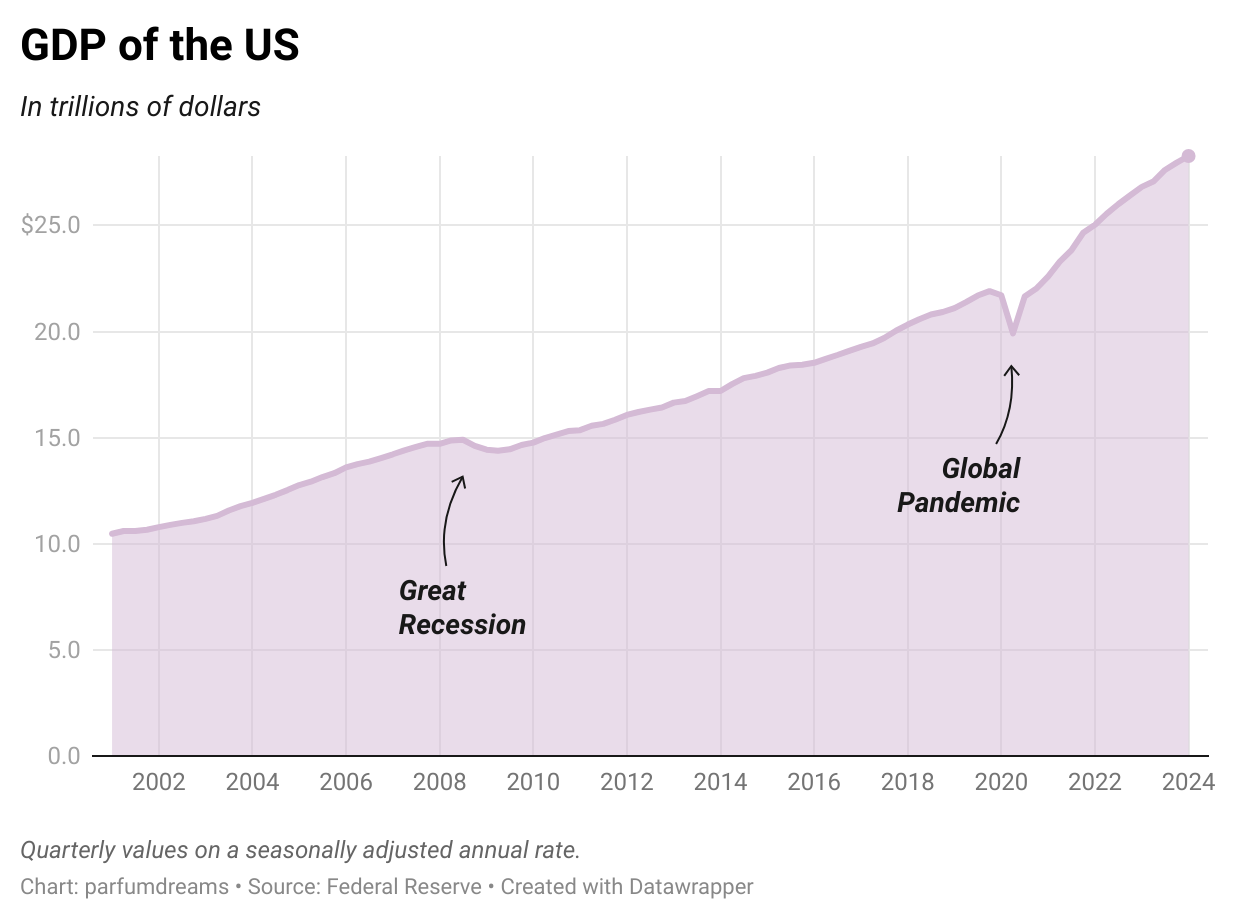
Economic downturns in the U.S.
The U.S. economy has dipped twice in recent history: during the Great Recession and the COVID-19 pandemic.
Gross domestic product, or GDP, is a key tool for measuring how a country's economy is doing. It represents the value of all the goods and services produced and sold. The United States' GDP has largely trended up in recent decades except for the two notable exceptions shown in the chart above.
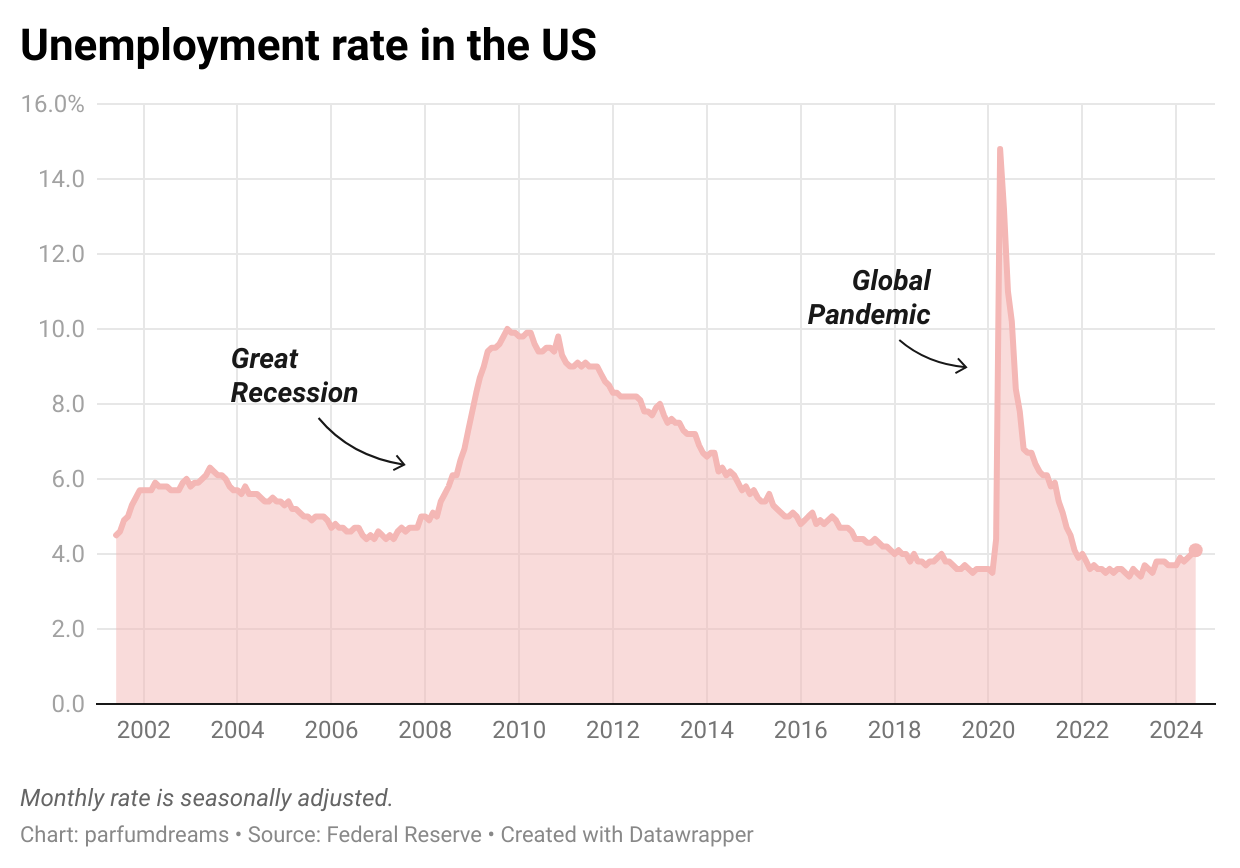
Unemployment brings economic decline
When the economy declines, more people are unemployed. In the case of the Great Recession, this happened over an extended period of time, from 2008 to 2010. During the pandemic, unemployment spiked immediately due to the country's public health lockdowns.
When people are unemployed, they are more careful with their spending. So, let's look at what happened to lipstick sales during this time.
Theory or Practice? Putting the lipstick effect to the test
In 2008, the first year of the recession, news outlets reported that consumers were indeed purchasing more lipstick. In late 2008, The Guardian reported that the "world's big cosmetic companies — L'Oréal, Beiersdorf, and Shiseido — confirm that the so-called lipstick effect has returned" as sales figures at those firms were strong.
Also that year, The New York Times quoted economists who said that the lipstick effect was hard to prove due to the limited and infrequent data on lipstick sales. While that wasn't exactly a ringing endorsement of the theory, they didn't dismiss it outright because it was consistent with other established economic theories.
However, as the financial crisis dragged on and unemployment ticked up, the lipstick effect started to lose its sheen. Companies like Estée Lauder saw a revenue dip in 2009. Kline & Company, a market research firm, reported that lipstick and lip gloss sales in the U.S. declined by 5.3% in 2009 — worse than the 0.8% drop for the overall US cosmetics and toiletries market. Mintel, another market intelligence firm, found in 2009 that female consumers in the U.S., France, and the U.K. were more likely to stop using or spend less on lip color than any other cosmetic product.
By 2011, even Leonard Lauder, who had explained the phenomenon of the lipstick effect a decade earlier, told Time magazine that people were bored with lipstick shades and that nail polish was a better indicator.
As the U.S. economy grew stronger, so did the global beauty industry. Color cosmetics, which include lipsticks, grew from $42 billion in global sales in 2008 to $72 billion in 2019, the year before the pandemic.
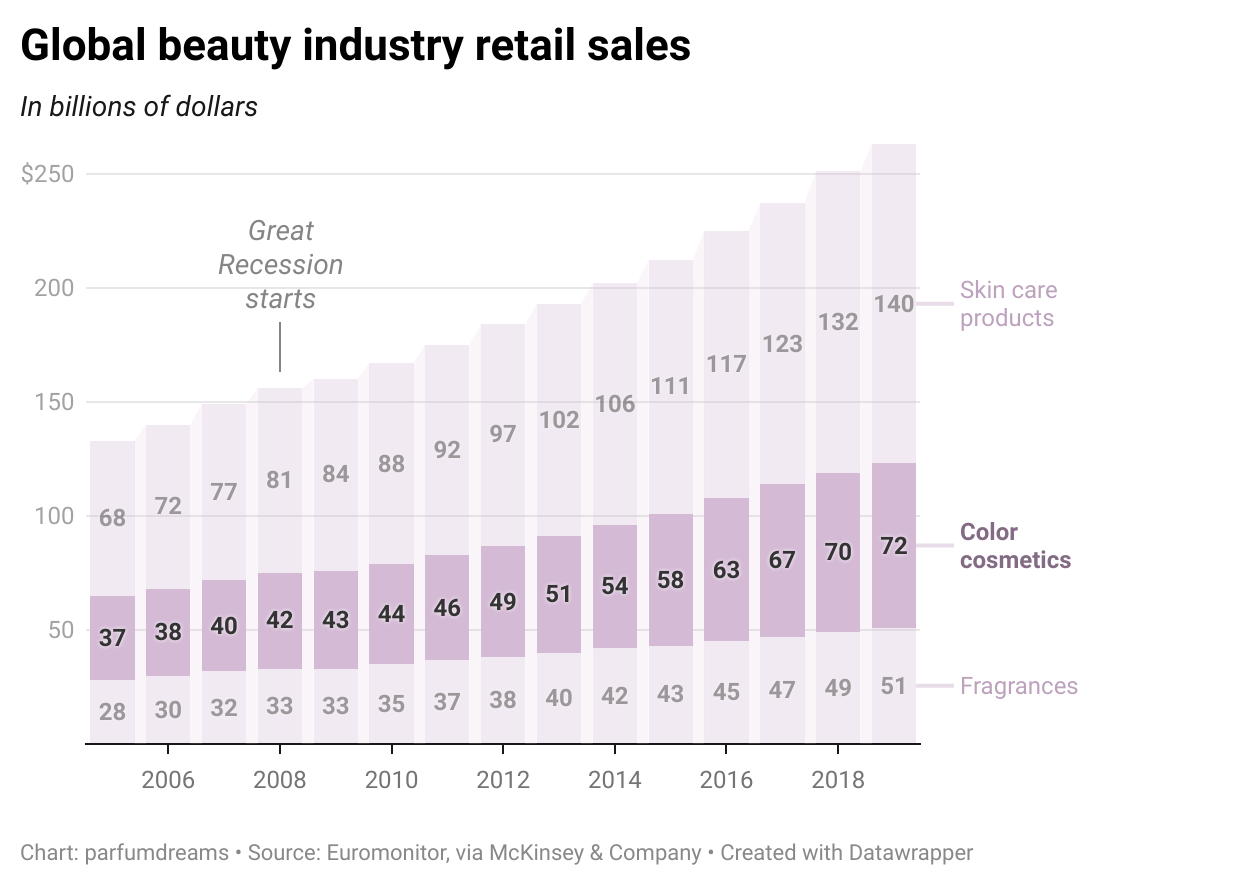
The pandemic punch
The onset of the COVID-19 pandemic in the spring of 2020 was a blow to the overall US economy — and the lipstick market. Amazon sales of lip care and color products in the U.S. between mid-March and mid-April 2020 were down 15% from the same period a year earlier, according to a report by McKinsey & Company. Some of the decline may have stemmed from job losses. But a bigger factor was the stay-at-home orders and mask mandates that eliminated the need for dramatic lips.The McKinsey report revealed that lipstick had a larger sales decline than face makeup (down 3%) and beauty tools (down 7%). Eye makeup actually increased 5%, likely because consumers wanted to focus on cosmetics that face masks wouldn't cover.
The lipstick effect clearly didn't happen during the pandemic. In fact, it seems that the opposite happened. L'Oréal's estimates of the global cosmetics market show a sharp decline in 2020, followed by 6% to 8% growth in each of the three years since. In other words, sales fell when the economy worsened and bounced back as the economy regained its footing.
Fully debunked?
Supporters of the lipstick effect may argue that the pandemic lockdowns and mask mandates make it impossible to measure the theory. However, if we put the pandemic economy aside, the theory still seems a bit shaky. U.S. lipstick sales were not strong during the worst period of the Great Recession, yet sales were strong in the years that followed, as the economy recovered and prospered.
And in the post pandemic economy, cosmetic sales have been on a tear. Adobe Analytics reported that the U.S. market for high-end lipstick increased by 37% between April and May 2024 and 18% year over year. So, can we finally stop talking about the lipstick effect as if it holds true economic value?
Not quite yet. One last thing to consider is that the current economy looks strong from many angles, but inflation has been a killer, as the below chart shows.
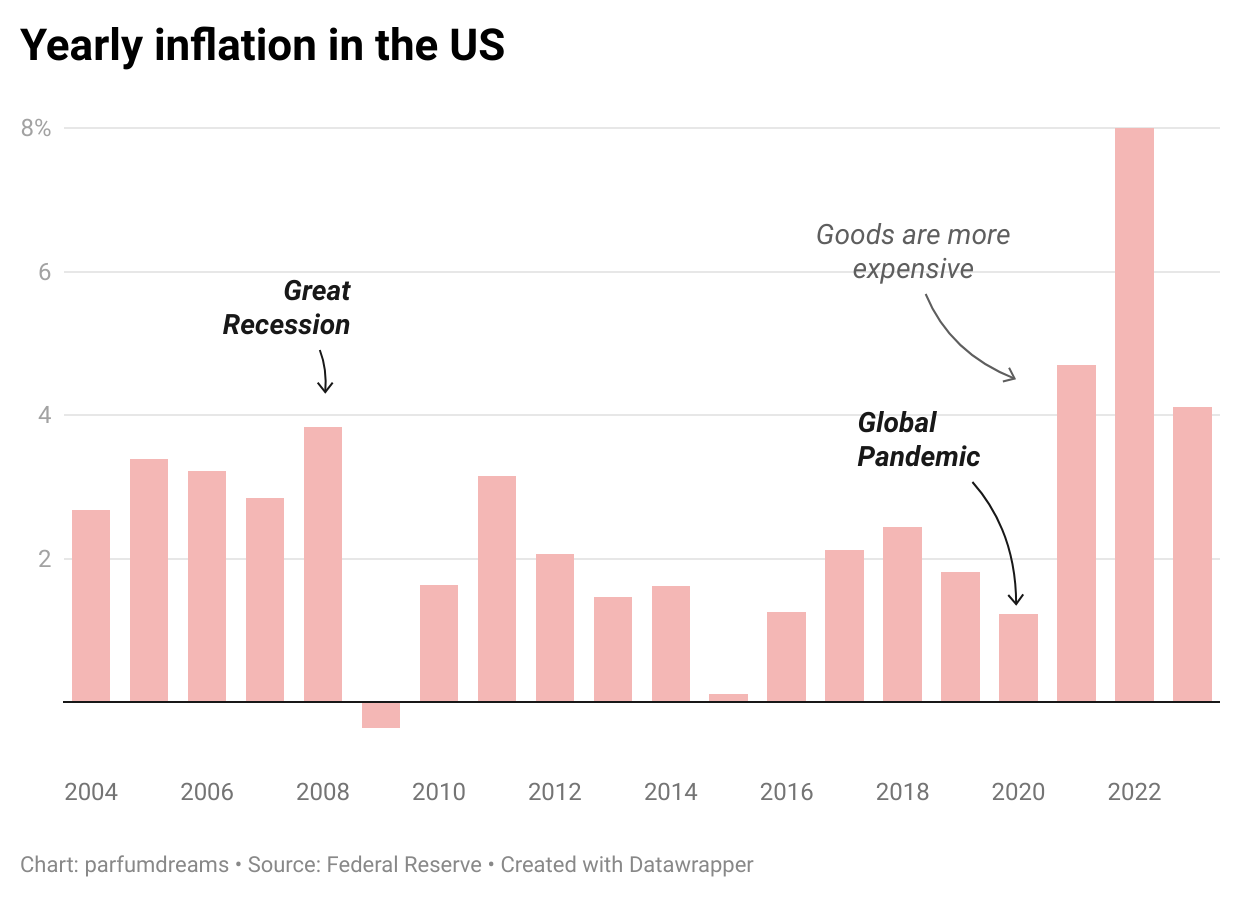
Lipstick Making Up For Luxuries
More consumers may have been buying lipstick in the post-pandemic years to compensate for the more expensive goods that have become unaffordable due to inflation.
More than sales figures
Sometimes it's also important to factor in things other than pure sales numbers, like the X factor — the feeling consumers (mostly women) associate with red lips. This X factor is visible in 2024 on every red carpet: Stars and celebrities are noticeably wearing more colored and red lips, whether at the Oscars in March or the Cannes Film Festival in May. Even if the economy seems stable on the surface, there's still unrest in the post-crisis years. Change is palpable, and we like to brighten our daily lives with some color. Red lips give confidence, strength, hope for more, and above all, joy and visibility. And that's exactly what July 29, Lipstick Day, stands for.



